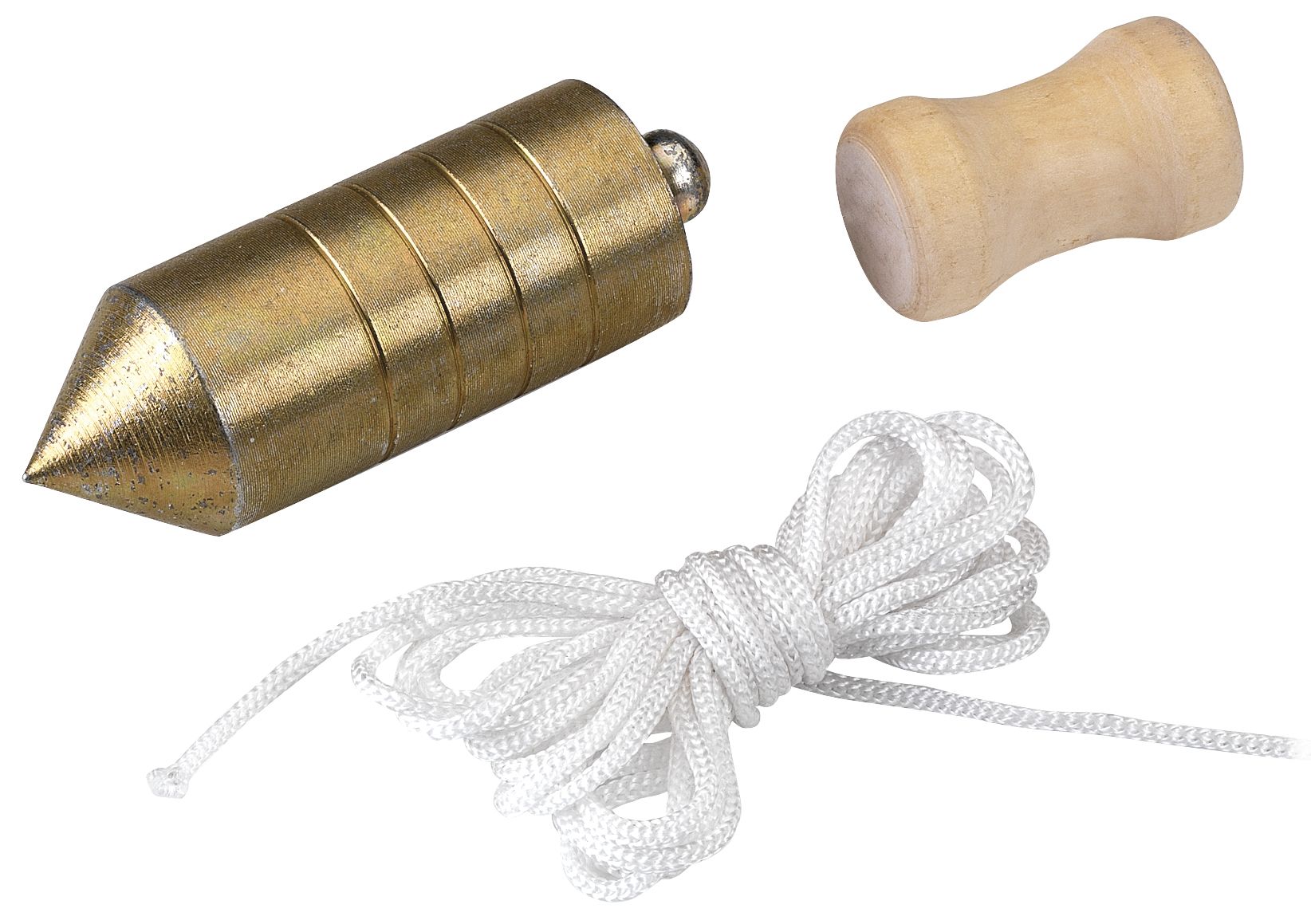

Articles
Why Would You Use A Plumb Bob In Wood Working
Modified: March 1, 2024
Discover the benefits and techniques of using a plumb bob in wood working articles. Enhance your precision and accuracy with this essential tool.
(Many of the links in this article redirect to a specific reviewed product. Your purchase of these products through affiliate links helps to generate commission for Storables.com, at no extra cost. Learn more)
Introduction
In the world of woodworking, precision and accuracy are paramount. Every woodworker strives to create flawless pieces that are both visually appealing and structurally sound. Achieving this level of craftsmanship requires attention to detail and the use of various tools and techniques. One tool that plays a crucial role in woodworking is the plumb bob. This simple yet powerful tool is used to ensure vertical alignment, measure and mark accurately, make precise cuts and angles, and even level surfaces.
In this article, we will explore the importance of using a plumb bob in woodworking and how it enhances the quality of the final product. Whether you are an experienced woodworker or just starting out on your woodworking journey, understanding and utilizing the plumb bob can take your projects to the next level.
Key Takeaways:
- The plumb bob is a versatile tool that ensures vertical alignment, accurate measurement, and precise joinery work, enhancing the quality and craftsmanship of woodworking projects.
- By utilizing the plumb bob, woodworkers can achieve accurate cuts, angles, and leveled surfaces, elevating their woodworking skills and creating visually appealing and structurally sound pieces.
Read more: Why Use A Plumb Bob
What is a plumb bob?
A plumb bob is a simple and essential tool used in various trades, including woodworking. It consists of a weighted object, often made of metal, attached to a string or line. The weight at the end of the string ensures that it hangs vertically due to gravity’s pull. The plumb bob’s primary purpose is to establish a vertical reference line, enabling woodworkers to maintain accuracy and precision throughout their projects.
Plumb bobs come in different sizes and shapes. Traditional plumb bobs are shaped like cones or cylinders, while modern variations may have more ergonomic designs for ease of use. Some plumb bobs also have built-in features such as a reel for retracting the line, making them more convenient and portable.
Woodworkers have been using plumb bobs for centuries because they provide a reliable and straightforward method of determining vertical alignment. By suspending the plumb bob from a fixed point, such as a ceiling beam or a tripod, woodworkers can ensure that their work is perfectly plumb.
Plumb bobs are commonly used in combination with spirit levels, which ensure horizontal alignment or levelness. Together, these tools help woodworkers create precise and balanced structures, ensuring that their final products are both visually appealing and functional.
Importance of plumb bobs in woodworking
Plumb bobs play a crucial role in woodworking projects, offering several benefits that contribute to the overall quality of the final piece. Let’s explore some of the key reasons why woodworkers rely on plumb bobs:
Ensuring vertical alignment in projects
One of the primary purposes of a plumb bob is to establish and maintain vertical alignment in woodworking projects. When precision is vital, such as when installing wall cabinets or building a staircase, any deviation from the vertical can be visually noticeable and structurally problematic. The plumb bob allows woodworkers to ensure that their work is perfectly vertical, avoiding issues such as uneven joints or unbalanced structures.
Achieving accuracy in measuring, marking, and layout
Accurate measurement and marking are critical in woodworking to ensure parts are cut and shaped correctly. A plumb bob can be used in conjunction with a straightedge or carpenter’s square to create precise vertical and horizontal reference lines. These lines act as a guide for measuring and marking, ensuring that components are aligned correctly for cutting, shaping, or assembly. This precision ultimately contributes to the overall accuracy and quality of the finished piece.
Read more: Why Plumb Bob A Putt
Enhancing precision in joinery work
Joinery work, such as creating mortise and tenon joints or dovetail joints, requires a high level of precision. Using a plumb bob can help woodworkers ensure that the joint surfaces are aligned vertically, preventing any misalignments that could weaken the joint or affect the final fit. By using a plumb bob during the layout and assembly process, woodworkers can achieve tighter and more accurate joinery, resulting in stronger and more durable pieces.
Making accurate cuts and angles
When cutting wood, especially for complex angles or bevels, accuracy is essential. A plumb bob can be used to create reference lines that indicate the correct cutting angle. By aligning the plumb bob with the desired angle and marking the reference line, woodworkers can make precise cuts with confidence. This ensures that components fit together seamlessly and that the overall design remains consistent.
Using a plumb bob for leveling surfaces
Woodworkers often need to level surfaces, such as table tops or workbenches, to ensure stability and functionality. A plumb bob can be used to determine if a surface is perfectly level or if adjustments need to be made. By suspending the plumb bob at various points along the surface and checking for evenness, woodworkers can identify any areas that require leveling or planing. This ensures that the final product is functional and aesthetically pleasing.
Overall, the plumb bob remains an indispensable tool in woodworking, allowing for precise alignment, accurate measurement, and enhanced overall craftsmanship. By utilizing a plumb bob, woodworkers can achieve the level of quality and excellence they strive for in their projects.
Ensuring vertical alignment in projects
When it comes to woodworking, ensuring vertical alignment is crucial for both aesthetic and structural reasons. Whether you’re building a furniture piece, installing cabinets, or constructing a staircase, any deviation from the vertical can be visually noticeable and compromise the stability of the project. This is where the trusty plumb bob comes into play.
The plumb bob provides a simple and effective method for determining if a line or surface is perfectly vertical. Its weight, combined with the force of gravity, creates a reliable reference point that woodworkers can use to ensure vertical alignment throughout their projects. By suspending the plumb bob from a fixed point, such as a tripod or ceiling beam, woodworkers can easily establish a vertical line and compare it against the object they are working on.
Using a plumb bob to ensure vertical alignment offers several advantages. Firstly, it allows you to verify that your project is visually pleasing. When building a piece of furniture or installing cabinets, having vertical lines that appear straight to the eye is essential for a professional and polished look. Without a plumb bob, it can be challenging to determine if something is truly vertical just by sight alone.
Secondly, ensuring vertical alignment contributes to the structural integrity of the project. When constructing a staircase, for example, each step needs to be perfectly vertical to ensure safe and comfortable use. A slight deviation from the vertical can lead to uneven steps and potential hazards. By utilizing a plumb bob during the installation process, woodworkers can make precise adjustments to ensure that each step is perfectly aligned and secure.
In addition to building and installation projects, the plumb bob is also useful in various woodworking tasks. When marking reference lines for cutting or shaping components, using a plumb bob ensures that these lines are truly vertical. This helps to maintain accuracy and consistency in shaping and cutting operations. It is especially crucial for joinery work, where precise vertical alignment is essential for strong and well-fitting joints.
Furthermore, the plumb bob can be used when hanging items on walls or installing shelves. By referencing the plumb bob to establish vertical alignment, you can ensure that everything hangs level and won’t tilt or become unstable over time.
Overall, the plumb bob is a valuable tool for woodworking projects, enabling woodworkers to achieve precise vertical alignment. Its simplicity and reliability make it an essential companion for ensuring both the visual appeal and structural integrity of woodworking projects.
Read more: How To Use A Plumb Bob
Achieving accuracy in measuring, marking, and layout
Precision is key in woodworking, and achieving accuracy in measuring, marking, and layout is essential for successful projects. The plumb bob is a valuable tool that can assist woodworkers in ensuring precise measurements, accurate marking, and consistent layout.
When it comes to measuring, the plumb bob can be used in conjunction with a straightedge or a carpenter’s square to establish reference lines that are perfectly vertical or horizontal. By suspending the plumb bob and lining it up with a starting point, woodworkers can create accurate vertical or horizontal lines on their workpieces. These reference lines act as guides for measurements, allowing for consistent and precise results.
Furthermore, the plumb bob can be used to mark reference points on the workpiece. Whether it’s marking the center point of a board or indicating the positions for joinery work, the plumb bob ensures that the marks are vertical and in line with the desired layout. This helps woodworkers maintain accuracy throughout their projects, avoiding errors that can lead to ill-fitting joints or misaligned components.
Additionally, the plumb bob can aid in creating level layouts. For example, when laying out tiles on a floor or marking the position of wall cabinets, it is crucial to maintain a level line. By using a plumb bob to establish a vertical reference line and then using a level to transfer that reference horizontally, woodworkers can ensure that their layouts are perfectly level and consistent.
The accuracy provided by the plumb bob also extends to the joinery process. When making mortise and tenon joints or dovetail joints, precision is key for a tight fit and long-lasting strength. By utilizing the plumb bob to align the joint surfaces vertically, woodworkers can ensure that the joint will come together precisely, creating a snug fit that enhances the structural integrity of the final piece.
Moreover, the plumb bob plays a crucial role in marking and drilling holes for dowels, screws, or other fasteners. By ensuring that the plumb bob hangs vertically over the desired spot, woodworkers can accurately mark the precise position for drilling. This precision allows for seamless assembly and ensures that the components fit together flawlessly.
Overall, the plumb bob is an invaluable tool for achieving accuracy in measuring, marking, and layout in woodworking projects. Its ability to establish vertical reference lines and ensure consistent alignment greatly enhances the precision and quality of the final piece. Whether you’re marking, drilling, or laying out components, the plumb bob is a go-to tool that woodworkers can rely on for accurate and successful woodworking projects.
Enhancing precision in joinery work
Joinery work is a critical aspect of woodworking that requires precision and accuracy for strong and well-fitting joints. The plumb bob is a tool that greatly enhances the precision in joinery work, ensuring that the joint surfaces are aligned vertically and that the joinery is of the highest quality.
When it comes to joinery, such as creating mortise and tenon joints or dovetail joints, achieving a perfect fit is essential. The plumb bob plays a crucial role in this process. By using the plumb bob to ensure that the joint surfaces are aligned vertically, woodworkers can guarantee that the joint will come together accurately.
When working with mortise and tenon joints, for example, the plumb bob can be hung from the reference face of one component and aligned with the corresponding face of the other component. This ensures that the two faces are perfectly vertical and in alignment, allowing for a precise fit when the joint is assembled.
Similarly, when creating dovetail joints, the plumb bob can be used to align the vertical reference lines on the tails and pins. By ensuring that these lines are perfectly vertical, woodworkers can achieve tight and seamless dovetail joints that are both visually pleasing and structurally sound.
The plumb bob’s ability to establish vertical alignment in joinery work is crucial for several reasons. Firstly, it ensures that the joint surfaces are in a true and consistent position, minimizing any gaps or misalignments that can weaken the joint and compromise its strength.
Secondly, the plumb bob allows woodworkers to accurately mark and shape the joinery components. By referencing the plumb bob to establish vertical alignment, they can make precise cuts and measurements. This level of precision is essential for achieving a tight fit and ensuring that the joinery is of the highest quality.
In addition to its importance in traditional joinery techniques, the plumb bob is also invaluable when working with modern methods such as pocket hole joinery. With pocket hole joinery, the plumb bob can be used to verify that the pocket hole jig is properly aligned and vertical. This ensures that the screws are driven in at the correct angle and that the joinery is secure and stable.
Overall, the plumb bob enhances precision in joinery work by establishing vertical alignment and ensuring accurate measurement and shaping. By utilizing the plumb bob, woodworkers can achieve tight, well-fitting joints that not only enhance the aesthetics of their projects but also contribute to their structural integrity.
Making accurate cuts and angles
When it comes to woodworking, making accurate cuts and angles is vital for creating precise and visually appealing projects. The plumb bob plays a significant role in ensuring that woodworkers can achieve the desired level of accuracy when it comes to cutting and shaping their materials.
One of the key ways the plumb bob aids in making accurate cuts and angles is by providing a reliable reference line. By suspending the plumb bob and aligning it with the desired angle or reference point, woodworkers can create a vertical reference line on their workpiece. This line serves as a guide for making precise cuts and angles.
When cutting wood, especially for complex angles or bevels, accuracy is essential. By using the plumb bob to establish a reference line that indicates the correct cutting angle, woodworkers can make accurate cuts with confidence. This ensures that the components fit together seamlessly and that the overall design remains consistent.
Furthermore, the plumb bob can aid in aligning the blade or cutting tool with the workpiece. By referencing the plumb bob line, woodworkers can make adjustments to ensure that the cutting tool is aligned vertically. This alignment is especially crucial for cuts that require precise verticality, such as dado cuts or cuts for joinery work.
Not only does the plumb bob help with straight cuts, but it is also beneficial when making angled cuts. By using the plumb bob to establish a reference line at the desired angle, woodworkers can accurately mark the workpiece for cutting. This precision ensures that the final piece will have clean and precise angled edges, enhancing the overall appearance and fit of the project.
In addition to straight cuts and angles, the plumb bob can also be useful when creating curved cuts. By establishing vertical reference lines at multiple points along the curve, woodworkers can ensure that the cutting tool maintains the desired vertical alignment throughout the cutting process. This helps to achieve smooth and accurate curved cuts that follow the intended shape.
Overall, the plumb bob is an indispensable tool for making accurate cuts and angles in woodworking projects. Its ability to provide a reliable reference line enables woodworkers to achieve precise cuts and ensure consistency throughout their projects. By utilizing the plumb bob, woodworkers can confidently create beautifully crafted pieces with the desired level of precision and accuracy.
When using a plumb bob in woodworking, make sure to secure it properly to ensure accurate vertical alignment. Also, be mindful of any air currents that could affect its accuracy.
Using a plumb bob for leveling surfaces
Leveling surfaces is a crucial aspect of woodworking, ensuring stability and functionality in the final product. The plumb bob is a versatile and useful tool that can be employed to achieve accurate leveling in various woodworking projects.
When working on projects such as table tops, workbenches, or other flat surfaces, it is essential to ensure that the surface is level for proper functionality and aesthetics. The plumb bob can assist in this process by providing a reliable vertical reference line.
To level a surface using a plumb bob, woodworkers can suspend the tool from different points along the edges of the surface. By adjusting the position of the plumb bob until it hangs directly over the same point on the surface, woodworkers can determine if the surface is level or if adjustments need to be made.
By visually comparing the plumb line to various points on the surface, woodworkers can identify any areas that are higher or lower. This allows them to make informed decisions on how to level the surface, whether it be through planing, sanding, or adding shims.
The plumb bob’s use in leveling surfaces provides several benefits. Firstly, it ensures that the surface is flat and even, eliminating any wobbling or instability. This is particularly important for workbenches and tables, where a level surface is crucial for accurate assembly or measurements.
Secondly, using a plumb bob to level surfaces helps create a visually appealing final product. Whether it’s a tabletop or a shelf, having a level surface enhances the overall aesthetic by giving it a polished, professional look. This is especially relevant when woodworkers are working on projects that require precise fit and alignment, such as installing cabinets or creating display cases.
Another advantage of using the plumb bob for leveling surfaces is its versatility. It can be used on various types of materials, including wood, metal, or even concrete. This means that woodworkers can rely on the plumb bob for leveling tasks across different projects and materials.
Overall, the plumb bob serves as a valuable tool for leveling surfaces in woodworking projects. Its ability to establish a vertical reference line ensures that surfaces are leveled accurately, providing stability and visual appeal to the final product. By utilizing the plumb bob, woodworkers can achieve level and functional surfaces that meet their high standards of craftsmanship.
Read more: Why Do They Call It A Plumb Bob
Conclusion
The plumb bob is an essential and versatile tool in the world of woodworking. It offers numerous benefits, enhancing the quality and precision of woodworking projects across various aspects of the craft.
From ensuring vertical alignment to achieving accuracy in measuring, marking, and layout, the plumb bob proves invaluable in maintaining precision and consistency throughout the woodworking process. It establishes reliable reference lines, allowing woodworkers to create visually appealing and structurally sound pieces.
In joinery work, the plumb bob plays a critical role in ensuring tight and well-fitting joints. By using the plumb bob to align the joint surfaces vertically, woodworkers can achieve precise and durable connections that withstand the test of time.
Additionally, the plumb bob aids in making accurate cuts and angles. Whether it’s straight cuts, angled cuts, or curved cuts, the plumb bob provides a reliable reference line that helps woodworkers achieve the desired level of precision and accuracy in their projects.
Furthermore, the plumb bob is a versatile tool for leveling surfaces. It ensures flatness and stability, enhancing the functionality and aesthetics of woodworking projects such as tables, workbenches, or shelves.
Overall, the plumb bob is a must-have tool in any woodworker’s arsenal. Its simplicity, reliability, and ability to enhance precision make it an indispensable companion in the pursuit of excellence in woodworking.
So, the next time you embark on a woodworking project, remember to utilize the power of the plumb bob. Embrace its potential to ensure vertical alignment, achieve accuracy in measurement and marking, enhance precision in joinery work, make accurate cuts and angles, and level surfaces. With the plumb bob by your side, you can elevate your woodworking skills and create stunning pieces that showcase craftsmanship at its finest.
Frequently Asked Questions about Why Would You Use A Plumb Bob In Wood Working
Was this page helpful?
At Storables.com, we guarantee accurate and reliable information. Our content, validated by Expert Board Contributors, is crafted following stringent Editorial Policies. We're committed to providing you with well-researched, expert-backed insights for all your informational needs.
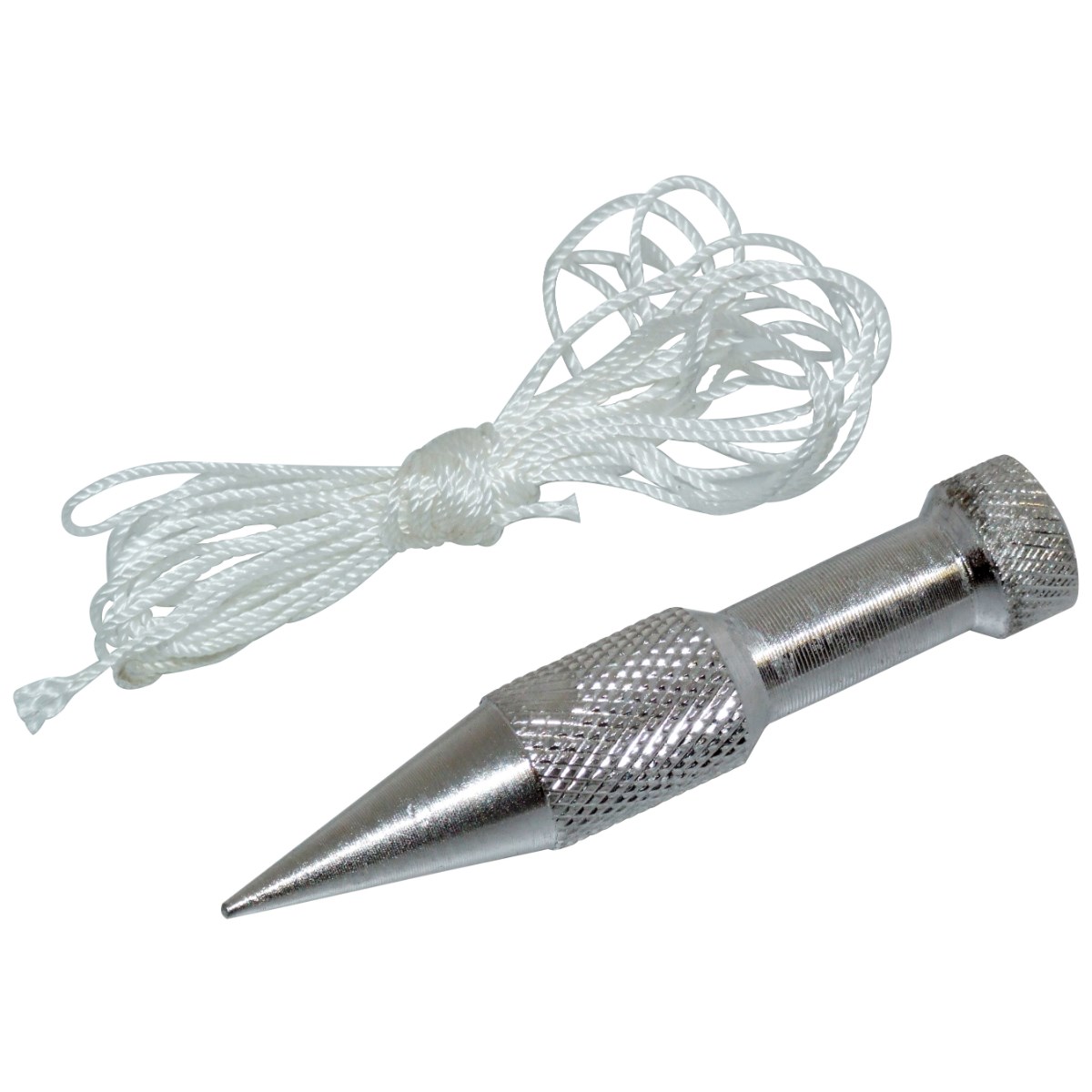
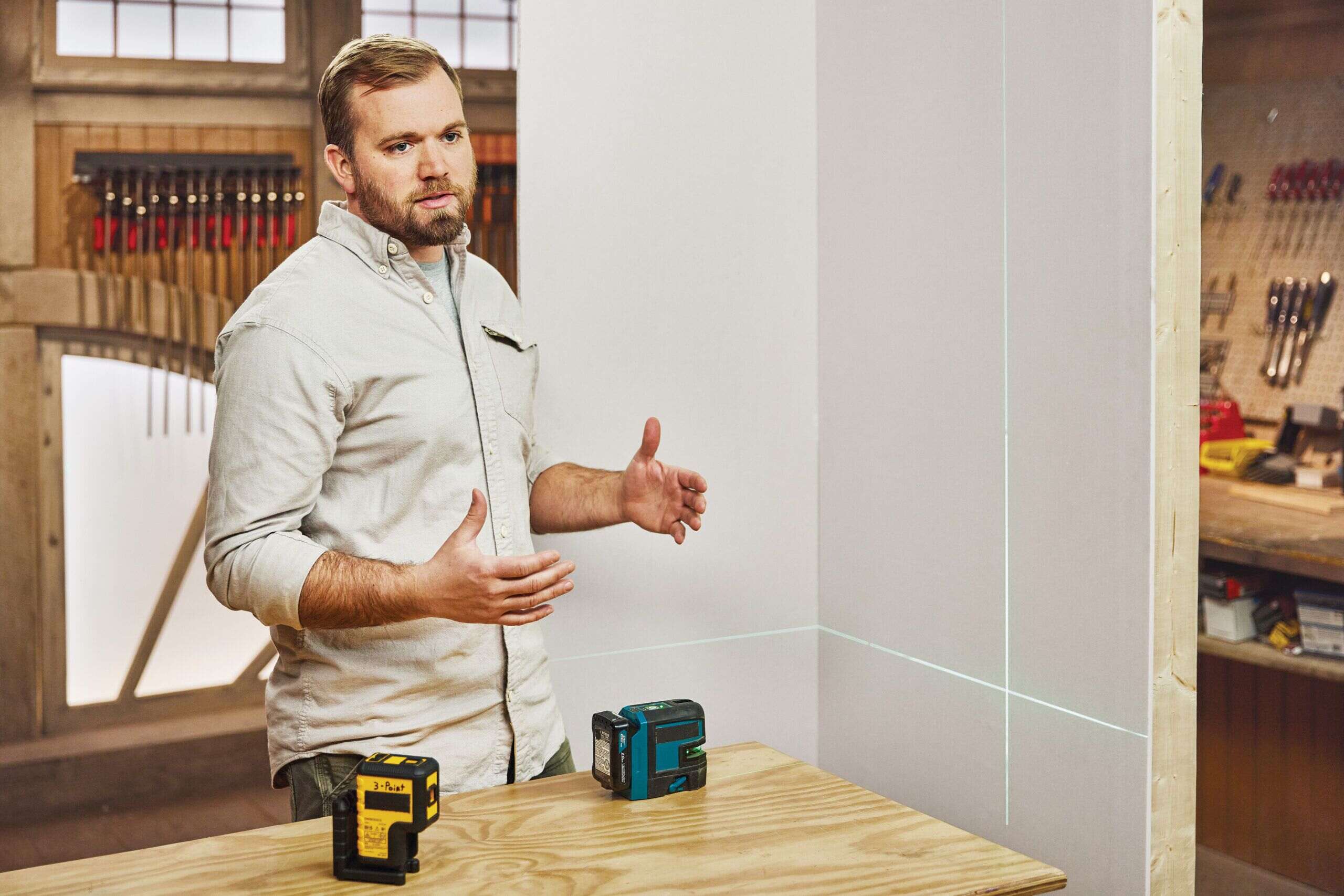
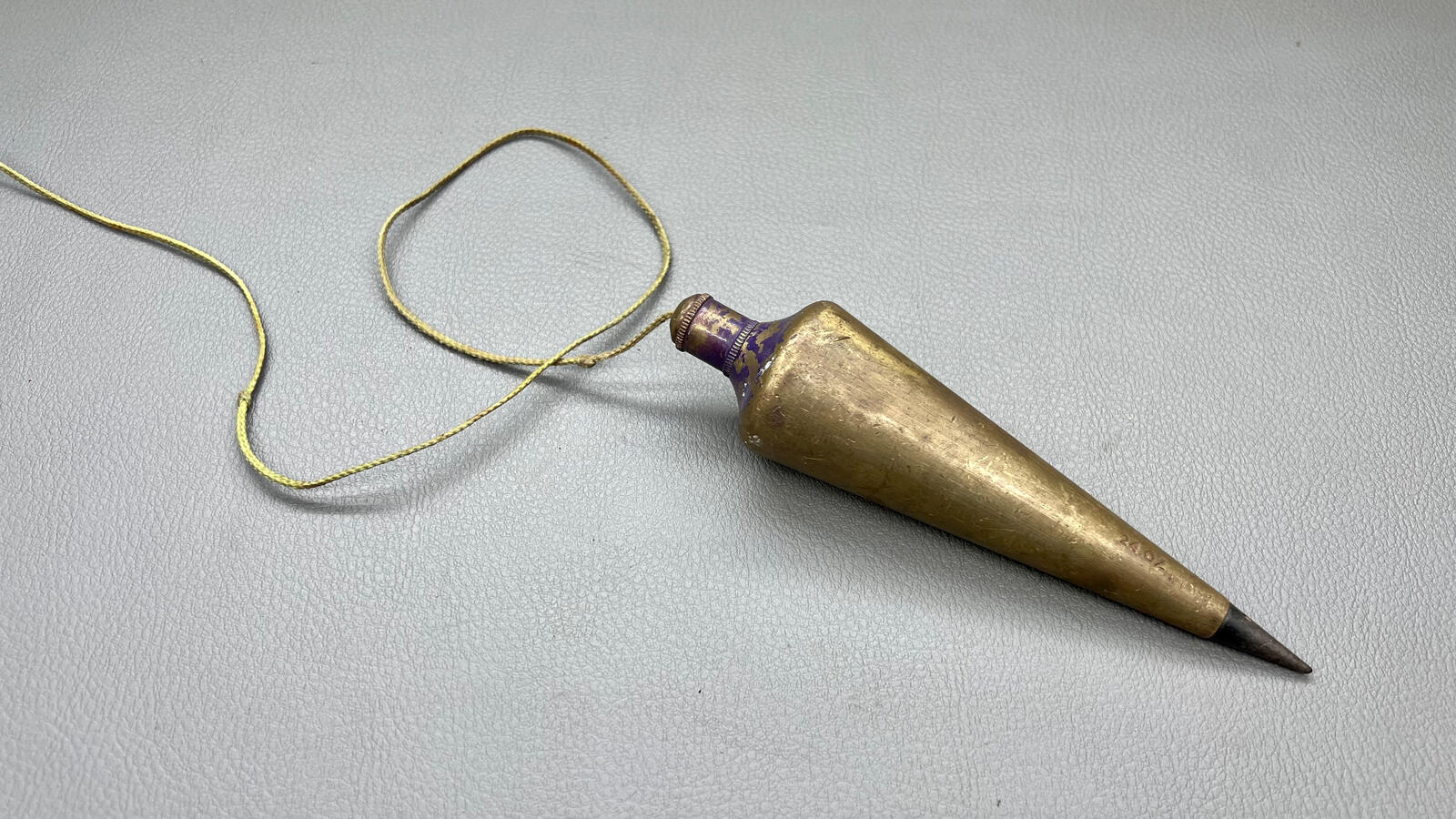

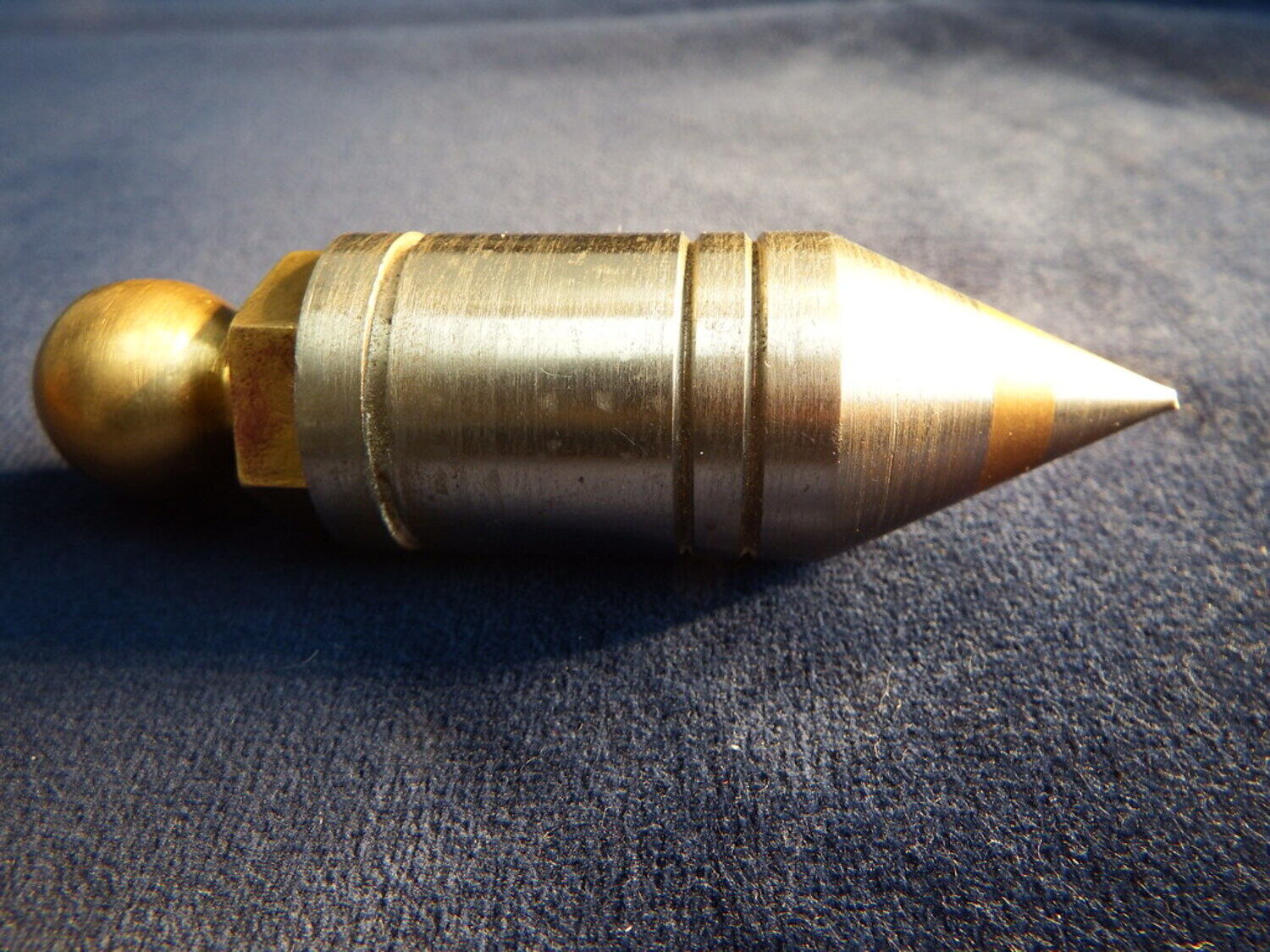
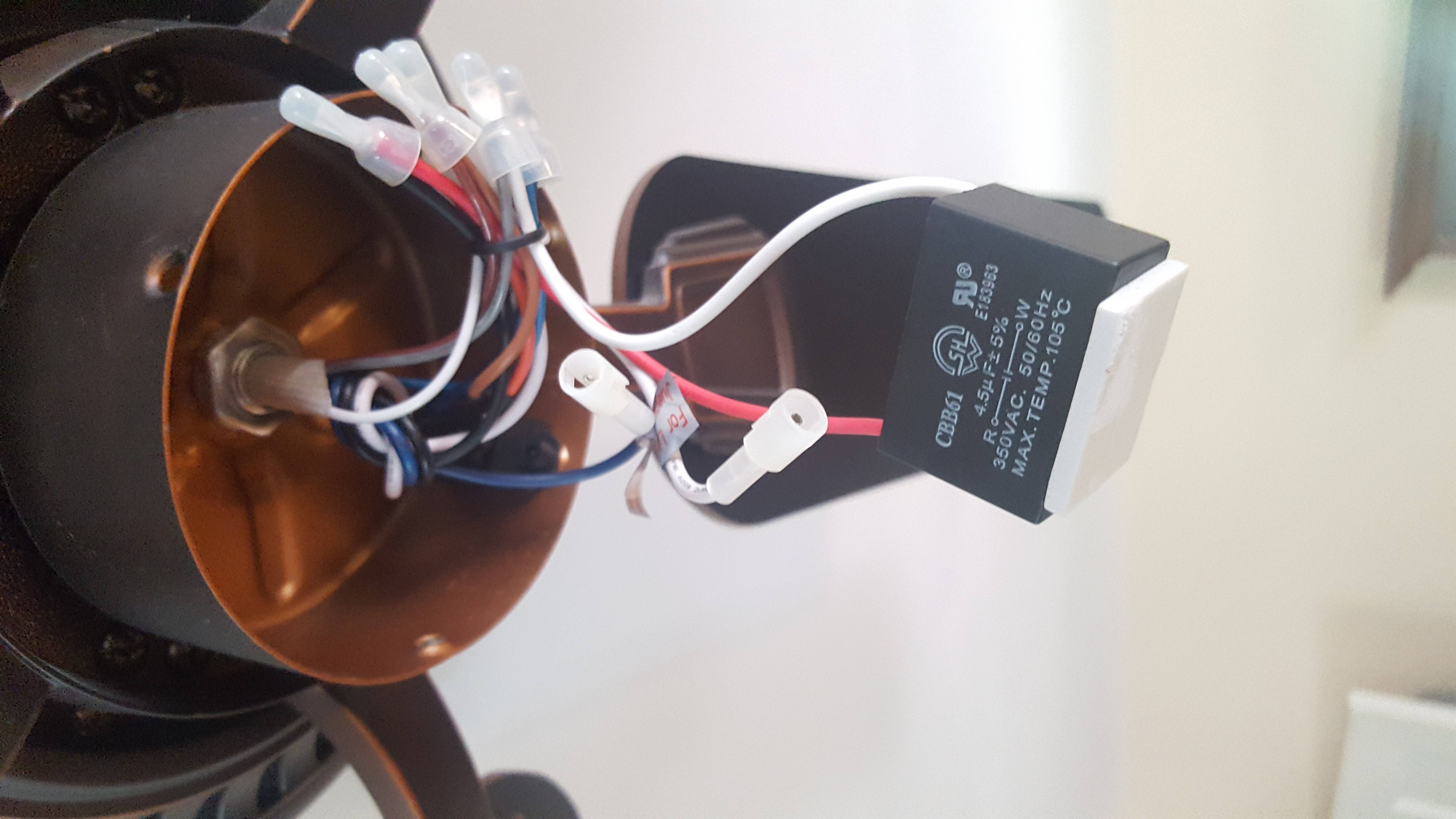

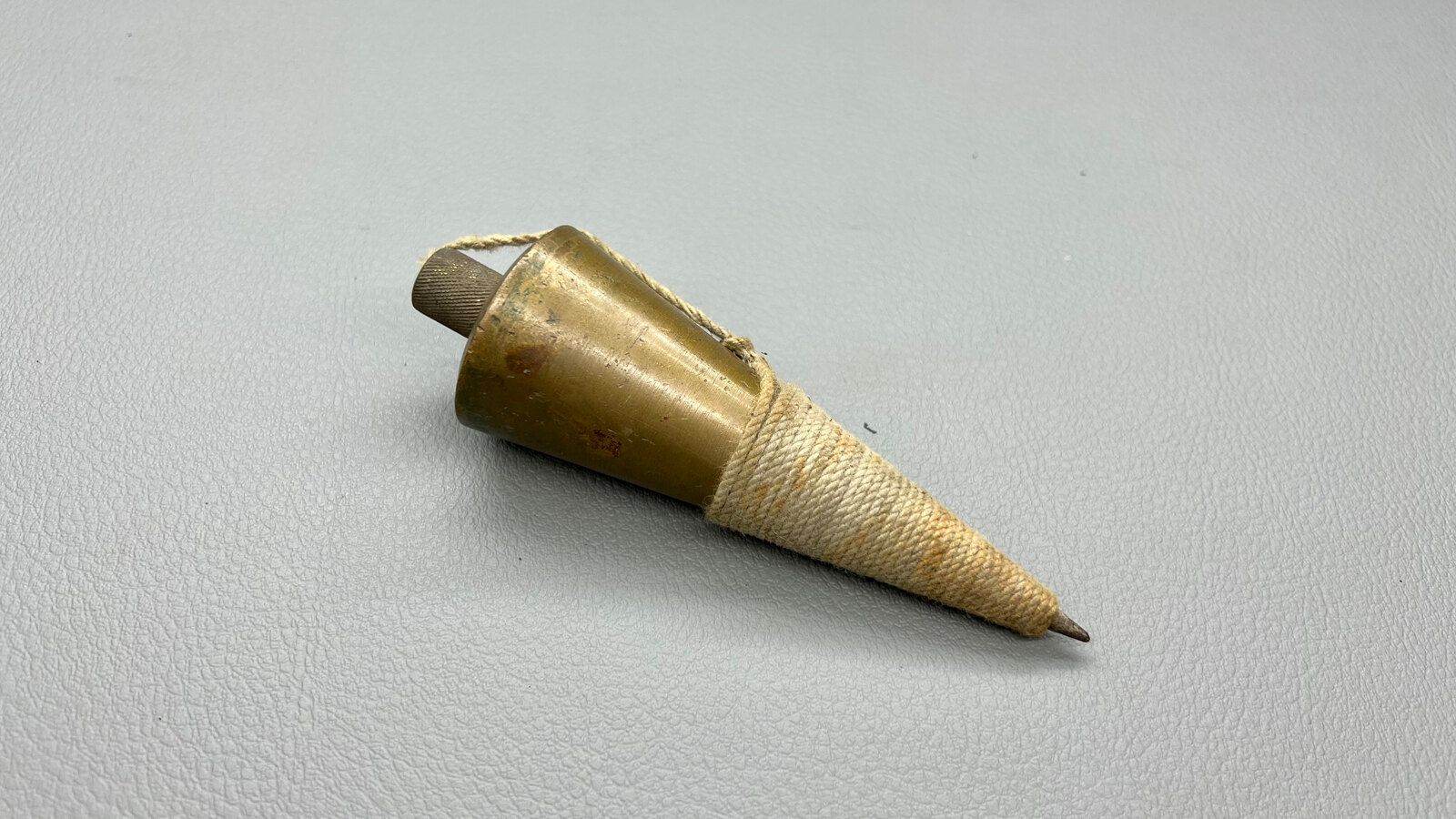
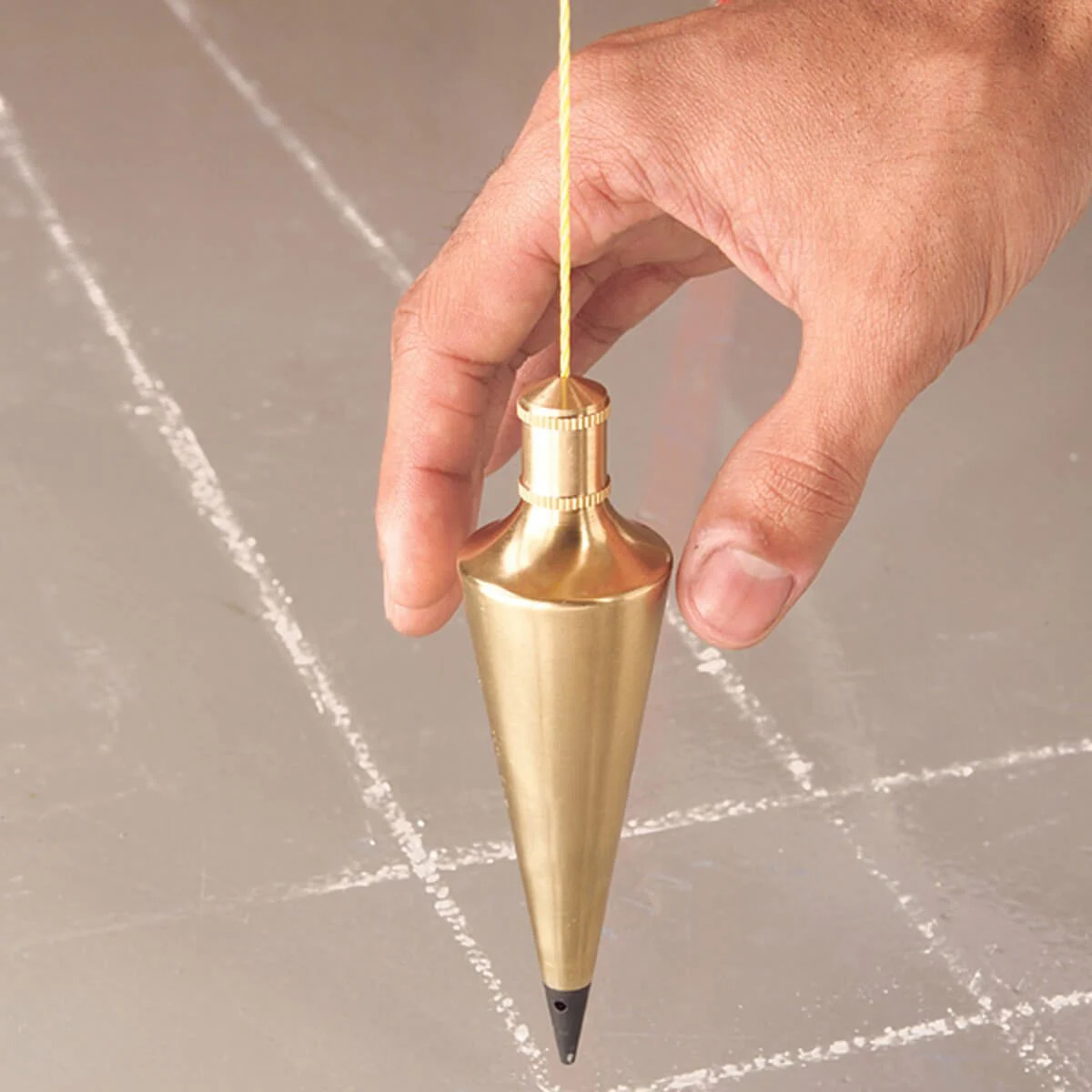

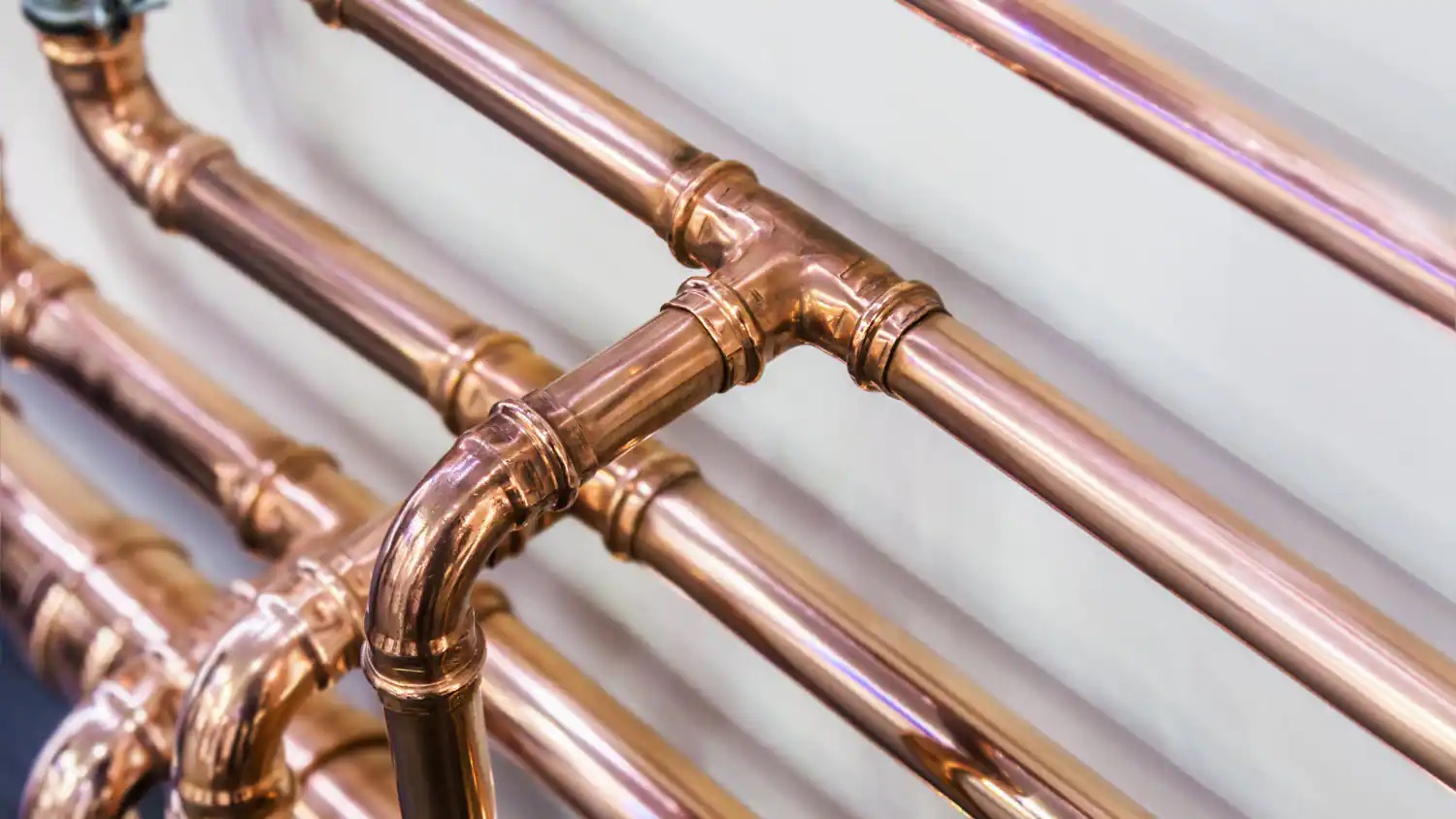


0 thoughts on “Why Would You Use A Plumb Bob In Wood Working”